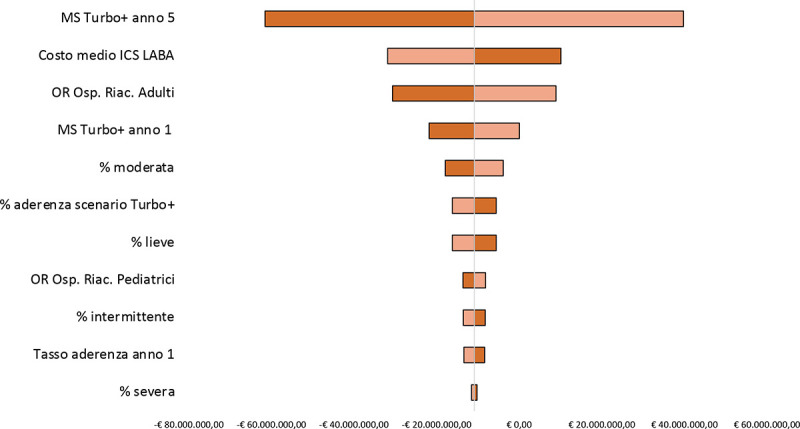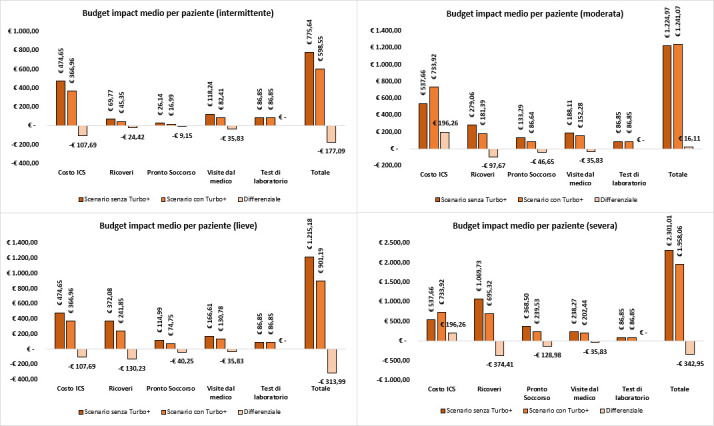预算影响分析在意大利引入涡轮增压遥测监测系统用于哮喘患者的管理。
IF 0.5
Q4 HEALTH CARE SCIENCES & SERVICES
引用次数: 0
摘要
本文章由计算机程序翻译,如有差异,请以英文原文为准。


Budget impact analysis sull’introduzione del dispositivo di telemonitoraggio Turbo+ nella gestione dei pazienti asmatici in Italia.
Introduction of the telemonitoring device Turbo+ in the management of patients suffering from asthma in Italy: a budget impact analysis Introduction: Adherence to long-term asthma control drugs is one of the key factors in improving disease management among patients with asthma. Poor adherence to long-term therapies significantly compromises the effectiveness of treatment and represents a problem in controlling the disease in terms of quality of life and economic impact. A budget impact analysis has been developed taking into account that Turbo+ technology (electronic monitoring device) can increase adherence to therapy in patients suffering from asthma. Methods: Coherently with the budget impact model methodology, we developed two different scenarios. One represents the clinical practice assuming a constant market share of 0,99% for Turbo+ and the other one assumes an incremental market share of Turbo+ over the time horizon considered. An increase in adherence to therapy will likely correspond to a reduction of exacerbations and a lower rate of hospitalizations, thus generating savings in terms of use of health resources. Results: The differential analysis shows an incremental saving in terms of resources absorbed by the National Health Service (NHS) over the time horizon considered. In the first year the savings are equal to € 795,658.64 and in the fifth year they are equal to € 3,520,636.34 for a total of resources saved in 5 years of € 10,882,028.50. Conclusions: The model shows how the diffusion of the Turbo+ programme can lead to savings in terms of health resources consumed by the NHS. Further analyses with new real-world data on adherence in asthmatic patients could be useful in confirming the results of the present analysis.
求助全文
通过发布文献求助,成功后即可免费获取论文全文。
去求助
来源期刊

Global & Regional Health Technology Assessment
HEALTH CARE SCIENCES & SERVICES-
CiteScore
0.80
自引率
20.00%
发文量
27
审稿时长
8 weeks
期刊介绍:
Global & Regional Health Technology Assessment (GRHTA) is a peer-reviewed, open access journal which aims to promote health technology assessment and economic evaluation, enabling choices among alternative therapeutical paths or procedures with different clinical and economic outcomes. GRHTA is a unique journal having three different editorial boards who focus on their respective geographical expertise.
 求助内容:
求助内容: 应助结果提醒方式:
应助结果提醒方式:


